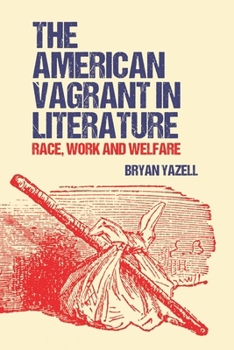The American Vagrant in Literature: Race, Work and Welfare
This book argues that the rapid development of anti-vagrancy laws in the late nineteenth century, which were written alongside widespread public fascination with 'tramps', facilitated a transatlantic dialogue between sources eager to modernize the state's ability to describe, catalogue, and manage this roving population. Almost always depicted as white, solitary, and artistic, the tramp character was once a menacing threat to society only to disappear from the public eye by the postwar period. This book brings to light the often-surprising lines of influence between authors, sociologists, and government authorities who alike seized on the social panic around tramping in order to reimagine the relation of work to national citizenship.
Format:Hardcover
Language:English
ISBN:1399506714
ISBN13:9781399506717
Release Date:April 2023
Publisher:Edinburgh University Press
Length:192 Pages
Weight:0.99 lbs.
Dimensions:0.5" x 6.1" x 9.2"
Customer Reviews
0 rating





